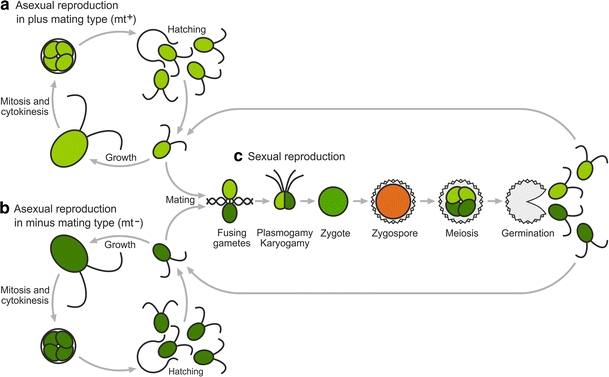Fig. 4.

Asexual and sexual reproduction in C. reinhardtii. Under favorable conditions of growth, Chlamydomonas reproduces asexually; only when the conditions are unfavorable does it reproduce sexually. a and b During asexual reproduction, cells grow and undergo two or more rounds of mitosis and cytokinesis before the daughter cells hatch from the old cell wall. Both mating types, the plus mating type (mt+) (a) and the minus mating type (mt−) (b), show identical asexual life cycles. c Sexual reproduction is induced by unfavorable conditions (nitrogen limitation), and asexual cells of both mating types develop into gametes. Gametes of opposite mating types are able to form aggregates via flagellar agglutination. After the release of cell walls, mating structures are formed, and the gametes fuse (plasmogamy and karyogamy) to form a zygote. The zygote further matures into a dormant, heavily walled, and diploid zygospore. At the time of spore germination, meiosis occurs to form four haploid progeny cells (two of each mating type), each of which grows into an asexual cell of the respective mating type
